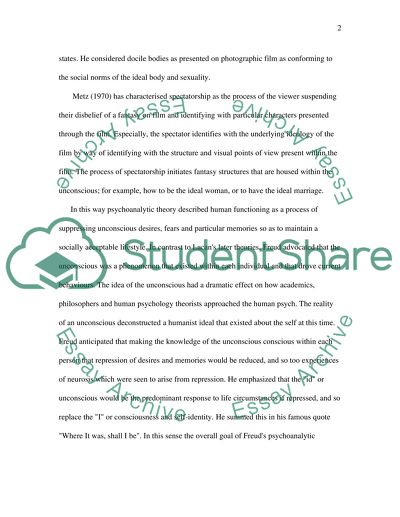Cite this document
(“Describe the contributions of 'psychoanalytic theory' to film theory Essay”, n.d.)
Describe the contributions of 'psychoanalytic theory' to film theory Essay. Retrieved from https://studentshare.org/miscellaneous/1530324-describe-the-contributions-of-psychoanalytic-theory-to-film-theory-and-visual-culture-in-general-be-sure-to-discuss-the-effect-of-pleasure-and-the-gaze-i
Describe the contributions of 'psychoanalytic theory' to film theory Essay. Retrieved from https://studentshare.org/miscellaneous/1530324-describe-the-contributions-of-psychoanalytic-theory-to-film-theory-and-visual-culture-in-general-be-sure-to-discuss-the-effect-of-pleasure-and-the-gaze-i
(Describe the Contributions of 'psychoanalytic theory' To Film Theory Essay)
Describe the Contributions of 'psychoanalytic theory' To Film Theory Essay. https://studentshare.org/miscellaneous/1530324-describe-the-contributions-of-psychoanalytic-theory-to-film-theory-and-visual-culture-in-general-be-sure-to-discuss-the-effect-of-pleasure-and-the-gaze-i.
Describe the Contributions of 'psychoanalytic theory' To Film Theory Essay. https://studentshare.org/miscellaneous/1530324-describe-the-contributions-of-psychoanalytic-theory-to-film-theory-and-visual-culture-in-general-be-sure-to-discuss-the-effect-of-pleasure-and-the-gaze-i.
“Describe the Contributions of 'psychoanalytic theory' To Film Theory Essay”, n.d. https://studentshare.org/miscellaneous/1530324-describe-the-contributions-of-psychoanalytic-theory-to-film-theory-and-visual-culture-in-general-be-sure-to-discuss-the-effect-of-pleasure-and-the-gaze-i.


